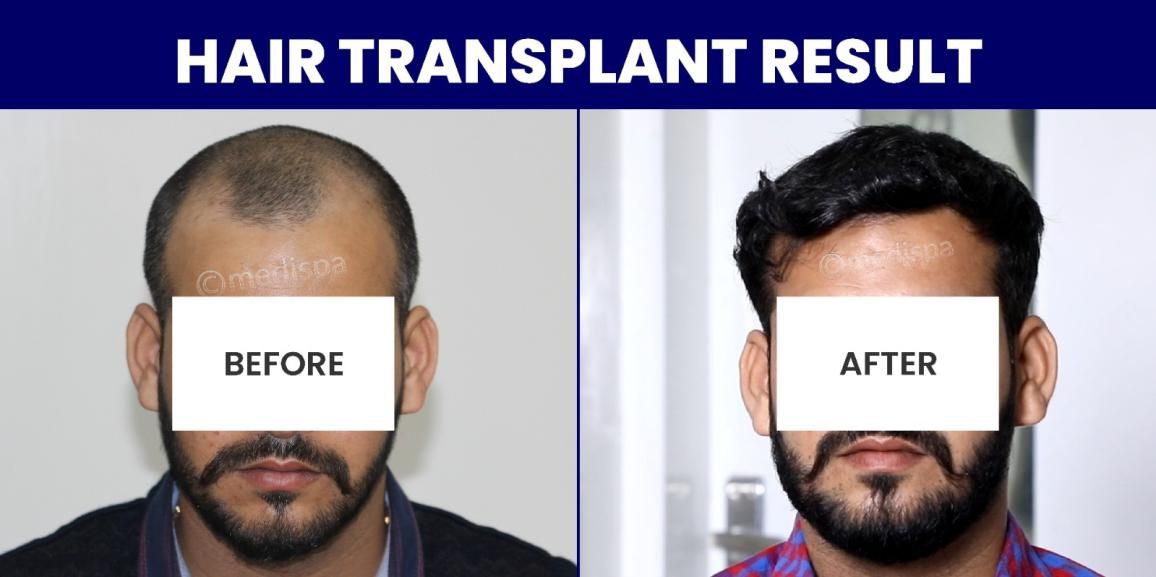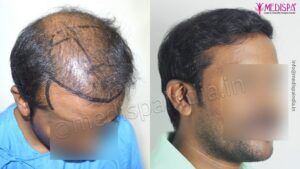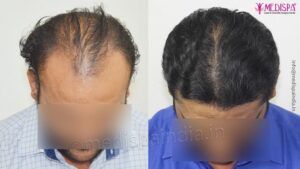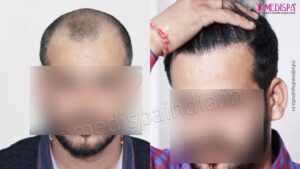
It is entirely understandable to explore various options for addressing hair loss; however, genetic baldness is an inevitable condition that cannot be avoided. In some instances, over-the-counter treatments such as Minoxidil may help to slow the process, but these solutions are only temporary. Among the myriad of available treatments, hair transplantation stands out as the only sustainable option, providing a long-term remedy for hair loss.
Contrary to popular belief, the procedure that can restore lost hair follicles or halt the progression of hair loss is not the hair transplant itself. Once a hair follicle is lost, it cannot be regenerated. The primary function of a hair transplant is to relocate hair from a donor site, typically located at the back and sides of the head, to areas that are bald.
As hair loss continues to become more prevalent, there has been a significant surge in the demand for hair transplant in Jaipur. The heightened competition within this sector has led to a decrease in the hair transplant cost in Jaipur.
Stages of pattern baldness?
The Norwood classification outlines the various degrees of baldness and consists of seven distinct phases of hair loss. The seven stages of hair loss are detailed as follows:
Class I: Entire hairline lies high on the forehead and is not actually balding.
Class II: Triangular areas of recession in the sides of frontal area and minimal recession on mid frontal area.
Class III: Borderline case. Deepening of triangular recession or can include thinning of hair on the vertex.
Class IV: Further frontal hair loss and widening of hair loss from vertex but still a wide band of hair present separating frontal and vertex hair loss.
Class V: Widening of frontal and vertex hair loss and continual breaking of separation line of hairs between frontal and vertex baldness.
Class VI: Band or bridge of hair disappear merging frontal and vertex baldness.
Class VII: A band ofhair presents only in back and side of the head.
What are the other treatment modalities to cure the baldness?
There are several methods available for managing or disguising hair loss; however, hair transplantation remains the sole long-term solution to this issue. The following outlines some treatment options for hair loss:
- Cosmetics, both natural and synthetic: These over-the-counter treatments for baldness can be found in cosmetic stores, yet their effectiveness is often unpredictable. While temporary hair loss typically resolves on its own, these products do not provide a permanent solution for baldness.
- Medications: Minoxidil and finasteride are among the most recognized medications for hair loss. These drugs aim to slow the progression of hair loss and encourage regrowth. Although the advantages of these medications are well-documented, they may only offer temporary results, as hair loss can resume once the treatment is discontinued.
- Hair accessories: Wigs, extensions, and custom hair patches are widely available today; however, they can be challenging to maintain over time. These solutions often require significant upkeep and frequent replacements, making them a costly and labor-intensive approach to addressing baldness.
Consequently, hair transplantation emerges as the most viable option for achieving a permanent resolution to hair loss. Additionally, there are numerous benefits of hair transplantation compared to other treatment alternatives.
Hair transplant: how precise is the procedure?
Hair transplant procedures encompass more than merely relocating hair follicles from the donor area to the bald region of the recipient. In reality, there are several vital decisions that must be made throughout the hair transplant journey, which demand a high level of expertise. These procedures are characterized by their precision, as the surgeon must manage tiny, microscopic hair follicles that require meticulous handling and care.
For a successful outcome, the processes of hair graft harvesting and hairline design must be preceded by well-informed decisions. It is essential for the hair transplant surgeon to evaluate the feasibility of the procedure, determine the number of hair grafts needed, assess the donor area, and select the appropriate technique for the operation. Each of these critical decisions necessitates thorough consideration during the consultation phase.
Different techniques of hair transplant
The predominant concern surrounding hair transplantation today, particularly with the increasing focus on aesthetics, is whether the results will appear natural. This concern is especially relevant for those who have witnessed the outcomes of inferior hair plugs or outdated techniques. Fortunately, there have been remarkable advancements in hair restoration technology. Numerous innovative, state-of-the-art methods are now available to ensure that your newly transplanted hair aligns seamlessly with the natural growth pattern of your hairline and facial features.
Modern hair transplantation techniques primarily employ two methods for extracting hair follicles during the procedure:
- Follicular Unit Hair Transplantation (FUHT)
- Follicular Unit Excision (FUE)
The key difference between FUE and FUT lies in the technique used to extract hair follicles from the donor area, which typically includes the back and sides of the head or other body parts. FUT involves removing a thin strip of scalp, meticulously harvesting follicular grafts under a microscope, and subsequently implanting these grafts in the designated recipient area. In contrast, FUE, or Follicular Unit Extraction, utilizes a motorized surgical instrument to extract individual “follicular units” before placing the grafts into the recipient site. The choice of method is influenced by factors such as the type of hair loss, the patient’s age, the quantity and quality of available donor hair, and the extent of baldness.
How does hair transplant help in curing the baldness?
If you qualify for the procedure, a hair transplant can effectively address your baldness and offer several advantages, including:
- The results of a hair transplant are permanent, allowing you to enjoy them for a lifetime.
- The procedure yields natural-looking outcomes, and when executed by a skilled and artistic professional, the hairline can appear entirely authentic.
- The process is relatively straightforward, as the transplanted hair requires no special maintenance and grows similarly to natural hair.
- The procedure is entirely painless and results in aesthetic improvements with minimal scarring that is nearly invisible.
- There are no significant complications following the hair transplant; it is an outpatient procedure, enabling you to resume work immediately.







